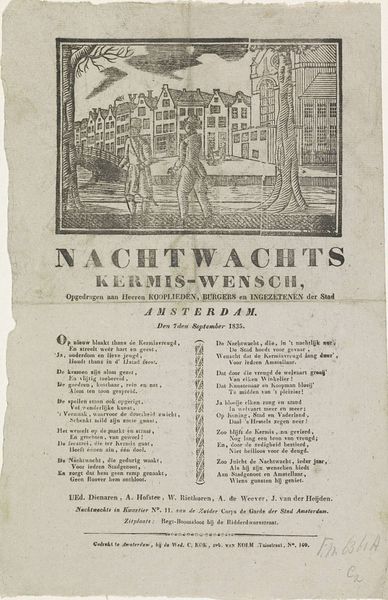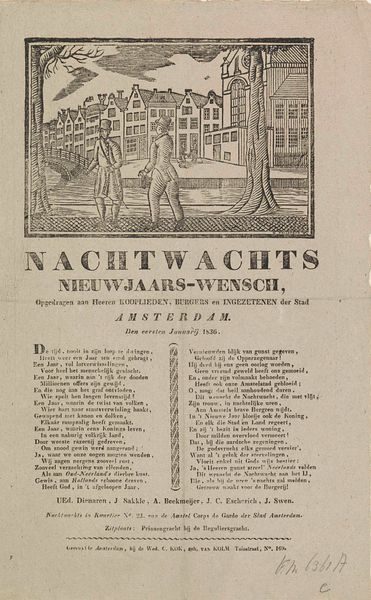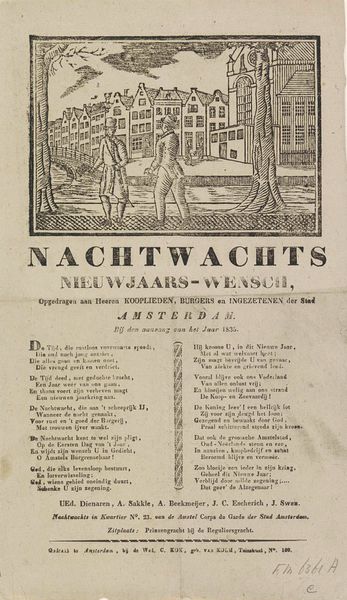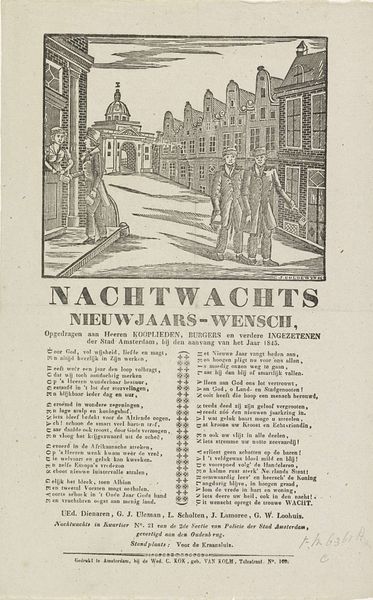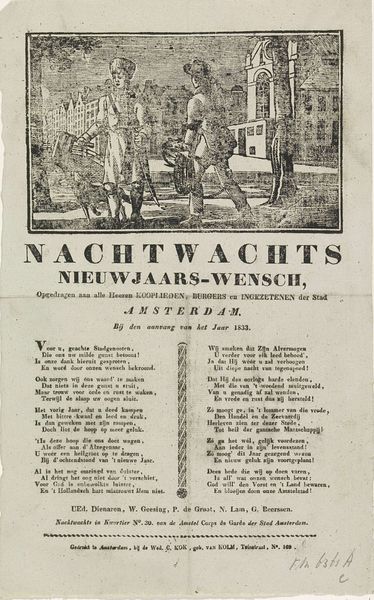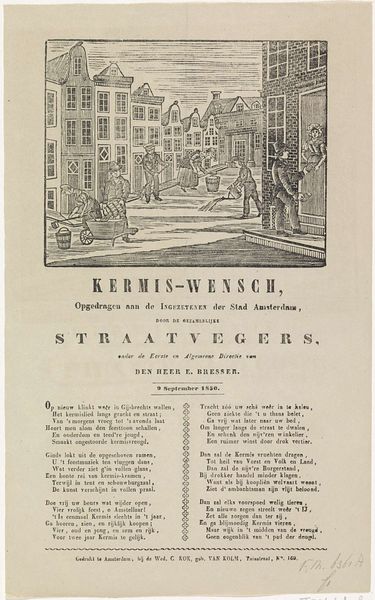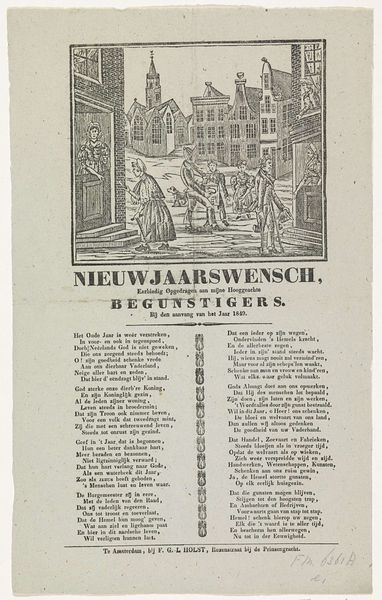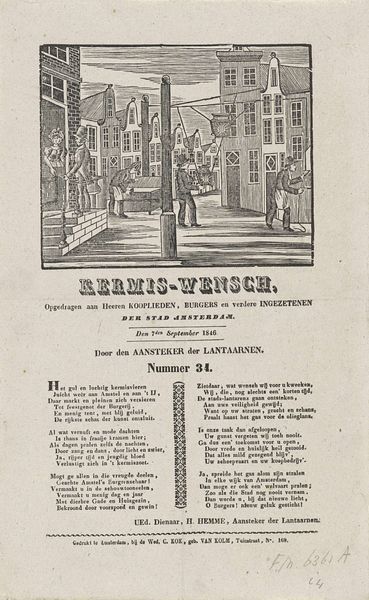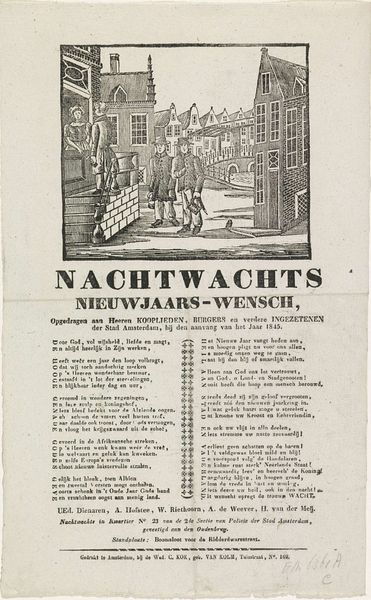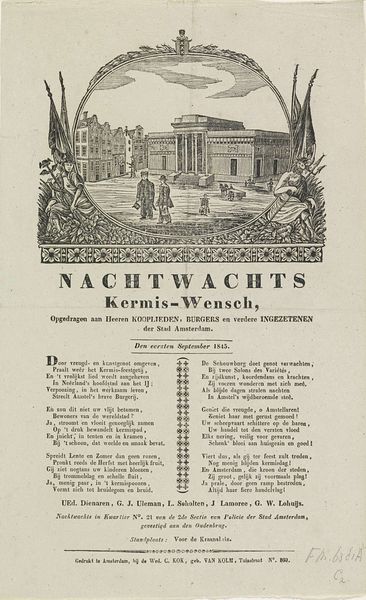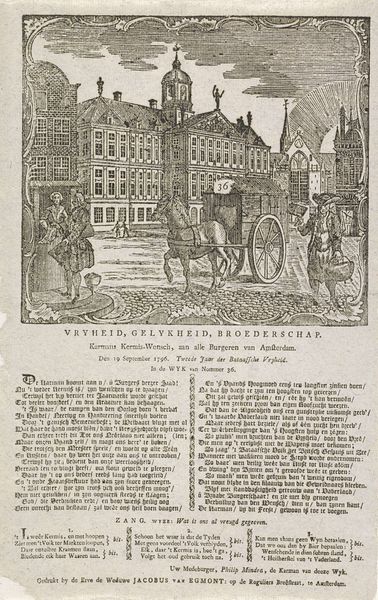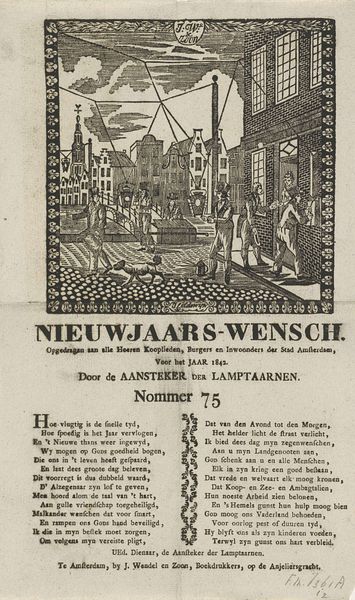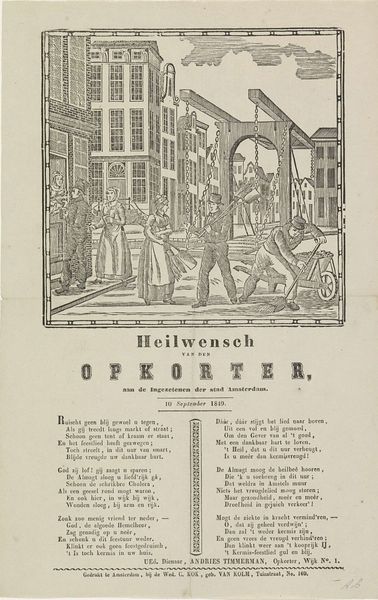
Nieuwjaarswens van de Amsterdamse nachtwacht voor het jaar 1837 1836 - 1837
0:00
0:00
print, engraving
#
dutch-golden-age
# print
#
cityscape
#
street
#
engraving
#
realism
Dimensions: height 340 mm, width 213 mm
Copyright: Rijks Museum: Open Domain
Curator: Let’s explore this rather interesting piece entitled “Nieuwjaarswens van de Amsterdamse nachtwacht voor het jaar 1837,” created around 1836-1837 by the Gebroeders Tollenaar. It's an engraving. What's your initial take? Editor: Bleak, I’d say. It has this kind of...grim formality, even though it’s also strangely endearing. Almost feels like a town crier’s announcement crossed with a religious pamphlet. Curator: Precisely. This was, in essence, a New Year's greeting from the Amsterdam night watch, dedicated to the city's merchants, citizens, and residents at the start of 1837. It showcases not just civic pride, but the role that labor plays in upholding the social fabric of the city, doesn’t it? Note the depiction of the cityscape—it provides the very setting for the guardsmen at center. Editor: Materially, this feels utilitarian. A practical, almost proletarian, kind of art. I mean, an engraving serving as municipal PR! It's intriguing how they mixed the visual representation of their watch with that dense, rather solemn, block of text beneath. Do we know who the author was? Curator: The night watchmen are named, actually. Look to the bottom. UEd. Dienaren, M. van der Hijden, H. ter Poorten, G. Klijn, H. Krager. It would have been produced and sold by the widow of C.G. Kok. Consider the networks involved in creating and distributing these sorts of materials. Editor: Kok—the production houses always had such wonderfully alliterative names, it almost felt like branding...inadvertently creating their own iconic mark, much like high end designers nowadays. It feels very functional. This wasn't made to hang in a gallery; this served as social messaging to convey sentiments of the guards. Curator: It also raises interesting questions about access to art. For the working class, objects like this print provided affordable, if limited, exposure to art. This wasn't some oil painting sequestered in a wealthy home. Editor: Right, print as a populist medium, shaping consciousness and solidifying social order at a key historical point...That somber aesthetic—the thin lines, the crowded text. There’s something inherently melancholic. Maybe that's the weight of responsibility and societal role literally pressed into paper? Curator: Perhaps that says more about our contemporary sensibility than the piece itself. Nevertheless, seeing such ephemeral artifacts contextualizes their place as essential civic rituals. Editor: Well, however you read the emotional state of the city, it does highlight art’s relationship to civic life... the humble labor involved in its production to that grand tower lurking in the background... Curator: Indeed. Thank you for your reflections.
Comments
No comments
Be the first to comment and join the conversation on the ultimate creative platform.
